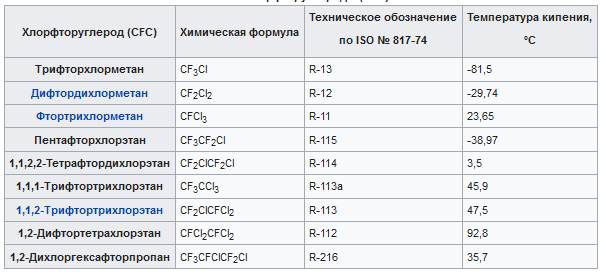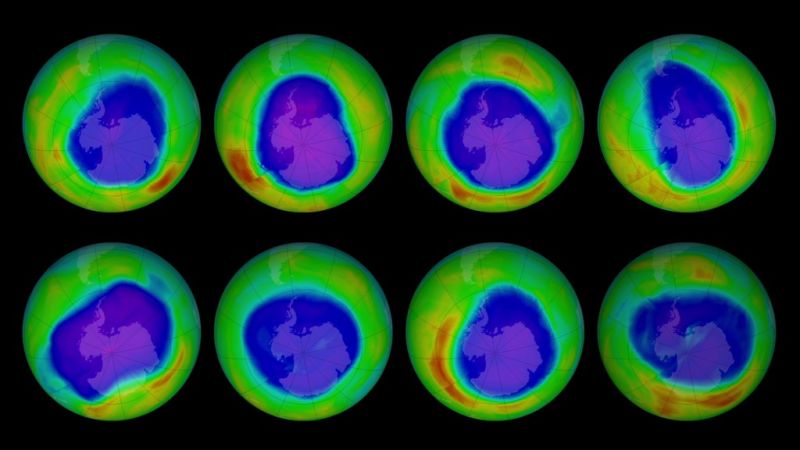The results of new research: the ozone layer is restored

The Montreal Protocol on Substances that Deplete the Ozone Layer is an international protocol to the Vienna Convention for the Protection of the Ozone Layer of 1985. It was designed to protect the thinning ozone layer, covering the Earth from the harsh UV radiation of the sun. The problem was that the industry began to massively use chemical compounds that actively react with ozone and destroy it.
By the way, there is a version that studies on the harm caused by the same freons to the ozone layer were conducted with massive financial support from commercial companies that created an alternative to chlorofluorocarbons (CFCs), and more expensive. And these companies decided to oust the manufacturers of these substances by launching an information program proving the "lethality" of this refrigerant for ozone. The version is not proven, but there is such an opinion. Anyway, now the results of new research related to the ozone layer have appeared. And the results clearly demonstrate one thing - the ozone holes began to tighten.
Chlorofluorocarbons are not only used as refrigerants. They have become widely used as propellants in aerosol cans, foaming agents, and explosion-proof solvents.

After a number of key decisions were taken to ban the use of chlorofluorocarbons in industry, the question arose of how to assess the impact of such a ban. The fact is that the ozone layer itself is quite dynamic. There are seasonal fluctuations and perennial cycles. The size of the ozone holes varies depending on the season and various kinds of meteorological phenomena.
Ozone generation is an extremely slow process. So slow that people who claimed to restore the ozone layer, many were perceived as fraudsters. Someone said that the holes are tightened, but then there was information that nothing like this had happened, and the hole in the protective layer of the planet, on the contrary, widened.
Worst of all, not only chlorofluorocarbons interact with ozone - other chemical compounds enter into a chemical reaction with it. Yes, and weather conditions also affect the ozone layer, since chemicals of various kinds are transported by air masses in various directions. So, it is very difficult to determine the effect of CFCs, and very many methods have been proposed that allow to clarify everything. Most of them turned out to be inappropriate.
Solution proposed by NASA. The organization launched the Aurora satellite , which is designed primarily to track the chemical composition of the atmosphere. Now two researchers from NASA, the Goddard Space Flight Center, are studying satellite observations for a long period of time of several years. A huge amount of information has already been processed, so we can draw certain conclusions regarding the dynamics of the ozone layer.

Scientists have observed the concentration of chlorofluoro-carbon and nitrogen oxide. As it turned out, the dynamics of the transfer of the first and second coincides, since the air masses transfer to the Antarctic, where there is an ozone hole, both types of substances from approximately the same regions. At the same time, nitrous oxide does not interact with ozone at all; therefore, by its concentration, it is possible, by making appropriate correlations, it is possible to determine the concentration of chlorofluorocarbons brought to the region.
Another way to determine the dynamics of the concentration of the latter is to monitor the presence of hydrochloric acid in the atmosphere. The fact is that chlorofluorocarbons, in addition to ozone, also react with methane, and the product of this reaction is hydrochloric acid. Knowing the concentration of the latter in the atmosphere, we can find out the amount of reacted CFCs.
Thanks to all these comparisons, scientists were able to prove that chlorofluorocarbons enter the Antarctic region less and less every year.
After carrying out all the necessary studies, the scientists made the following conclusion: “All this is evidence of the effectiveness of regulators' actions within the Montreal Protocol - the amount of chlorofluorocarbons in the atmosphere over the Antarctic decreases, and the concentration of ozone increases.
All Articles